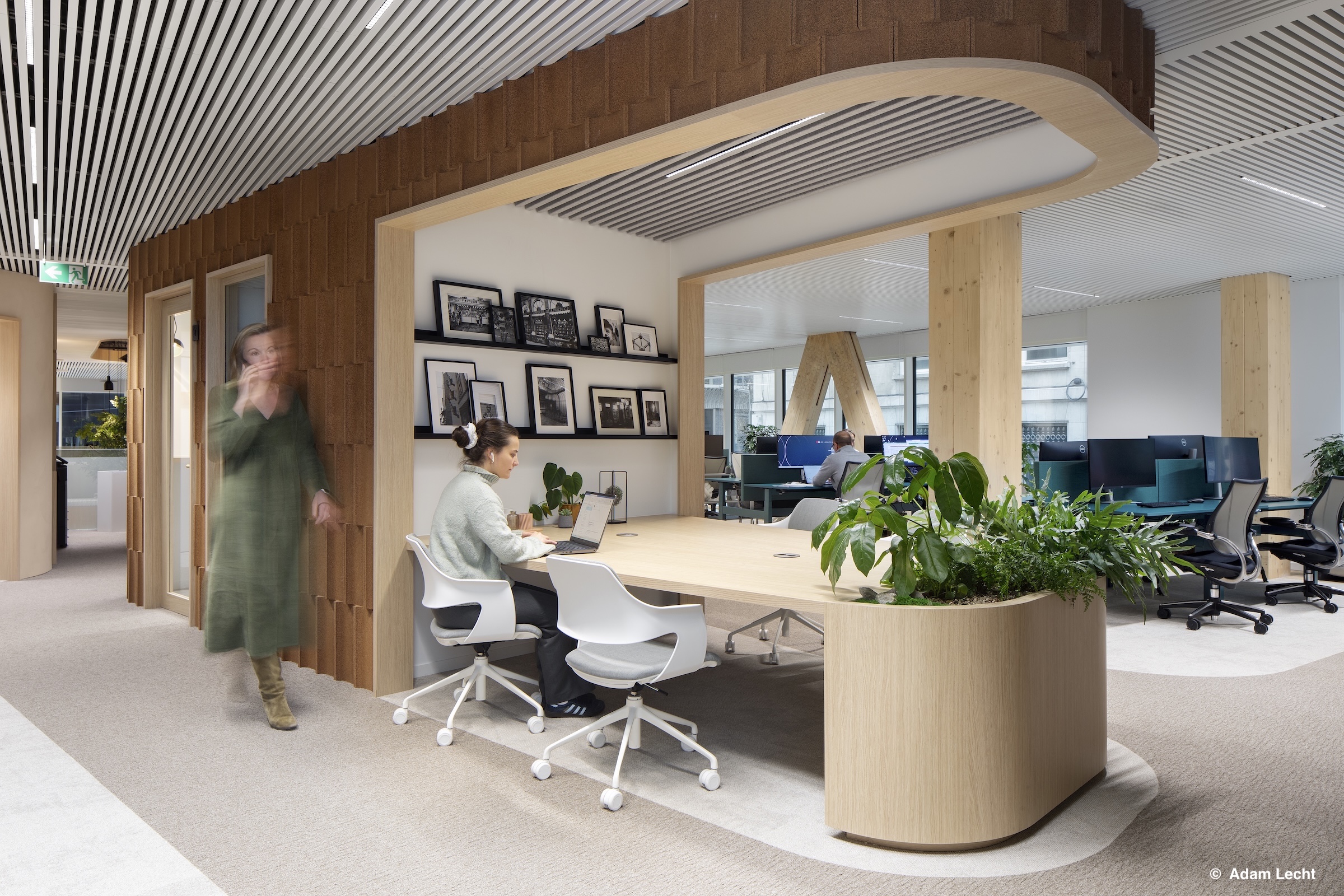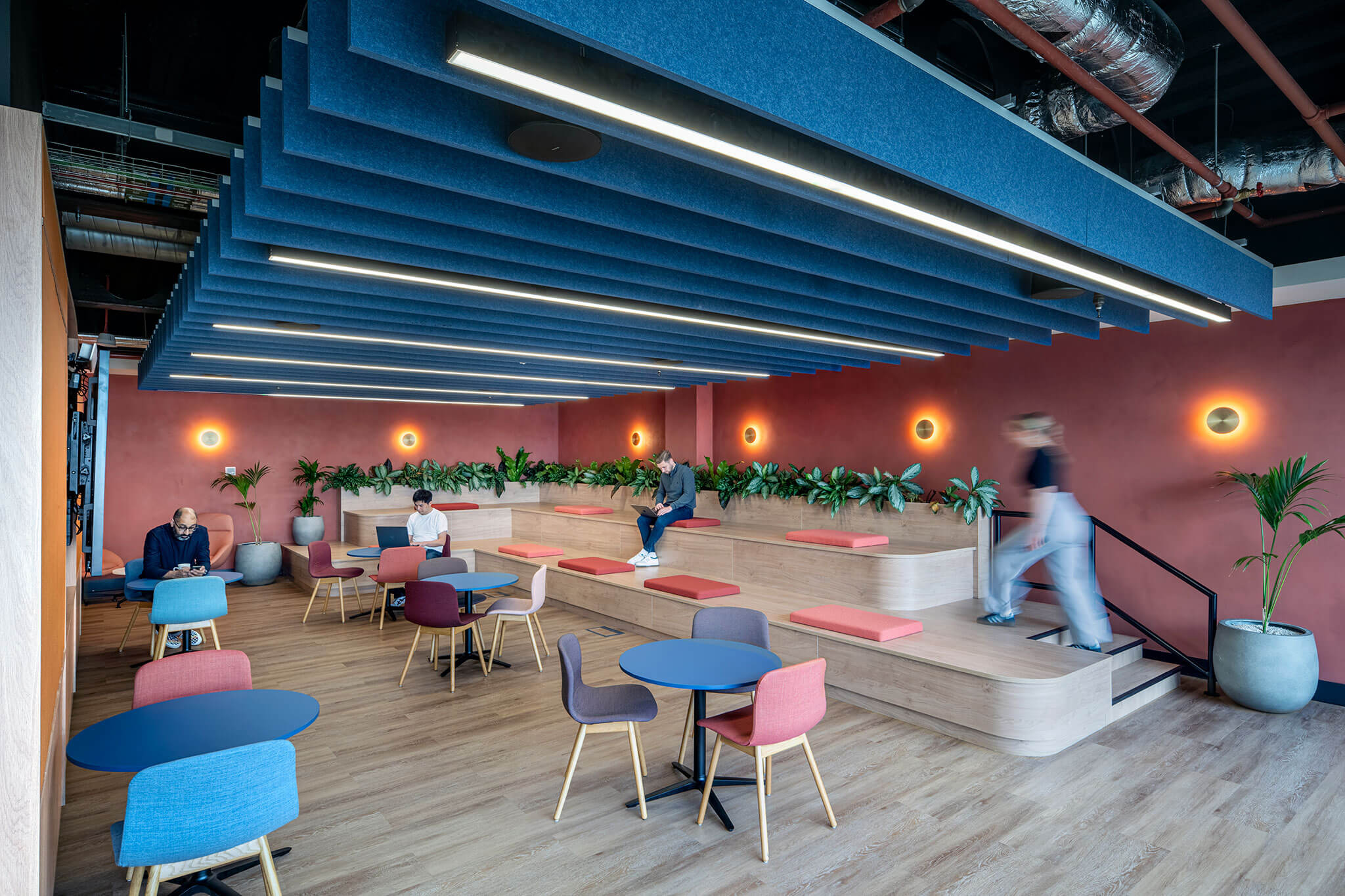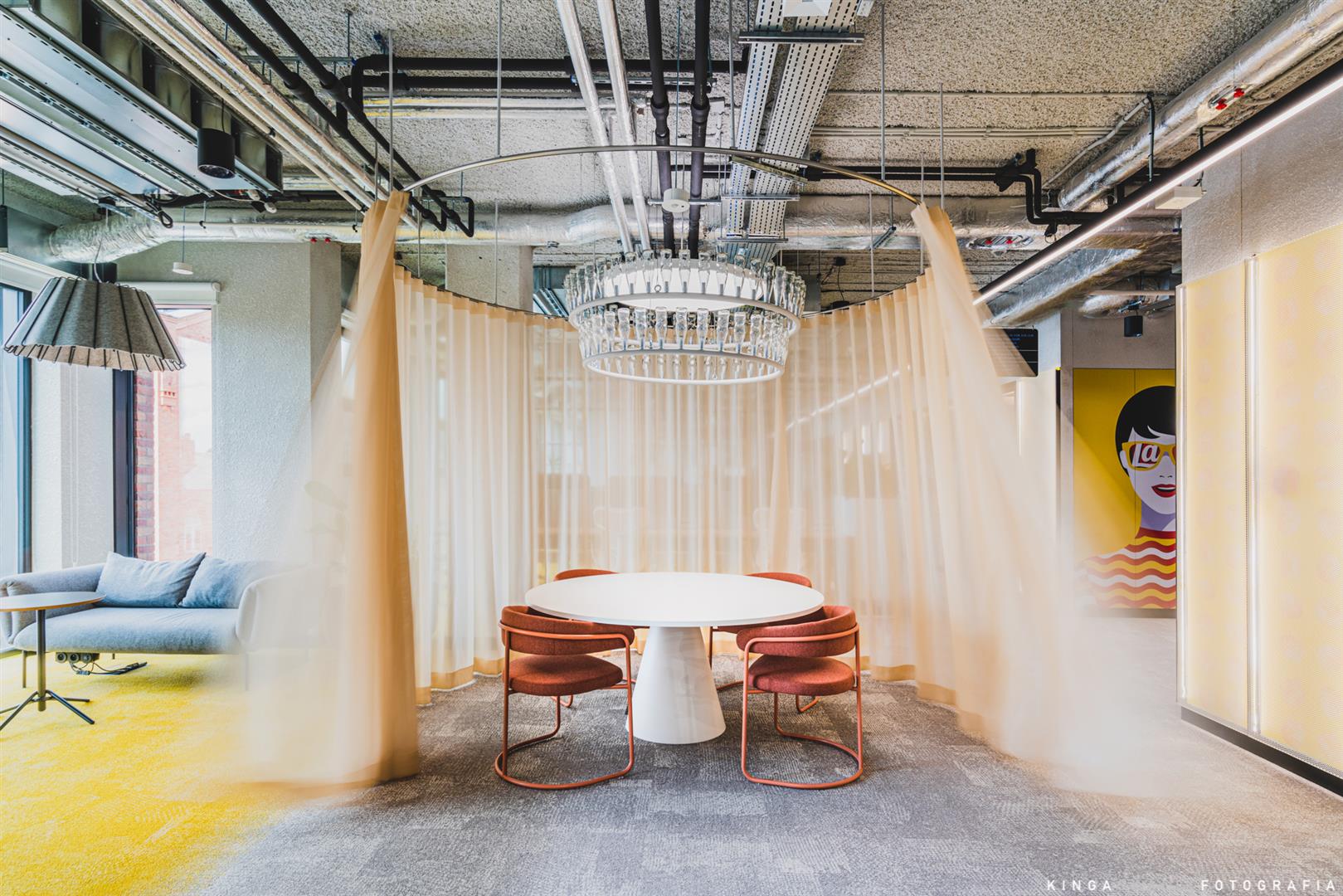Considering one of the largest tech companies in the world recently changed their name to Meta, it’s clear that the next big tech trend is going to be the metaverse. Every day brings new stories and speculation about how the metaverse may function, but one thing is clear – the metaverse is here to stay. So what does this mean for design?
The only limit is your imagination
From a design perspective, the metaverse offers a world of endless possibilities. “You’re simply not bound by the laws of physics anymore,” says Nuno Fernandes, Design Director EMEA at Tétris. This means workplaces in the metaverse will only be limited by a designer’s imagination. “We can push the boundaries in the metaverse and design spaces where we’re floating and not sitting down at a desk, or you could have a more traditional meeting set up.”

The metaverse provides freedom you just don’t have in real life; for example, you don’t have to adhere to building regulations, which is something that excites designers. Your office could have a fireplace on the rooftop, you can remove bathrooms altogether and perhaps even corridors – avatars might be able to transport themselves without having to walk from place to place.
This includes other spaces and isn’t exclusive to workplaces. But how do you go about designing and building these spaces? “What will happen is an architect will design a model and then it will be handed over to a gaming designer to construct in the virtual world. It’s not as farfetched as it sounds – the leap between digital and virtual is a smaller one than many realise,” says Jonathan Hillery, Head of Technical Design at Tétris South Africa.
Branding and commerce in the metaverse
Javier Furones, CEO of Voicehumans, a company that creates workforce AI with digital humans for consumer experience and Metaverse strategies, says that companies are focusing on a new way of understanding the consumer experience and the relationship with brands. “The metaverse is an amplification of reality. It is not just virtual reality, but also the digital world brought to the physical,” says Furones.

Branding already exists within the metaverse and is similar to real life, but this is just the beginning as the possibilities in the metaverse are endless. “The natural evolution of branding in the metaverse will be 3D adverts and billboards that reach out to avatars and interact with them,” says Hillery.
One sector that may benefit greatly from the metaverse is retail, as most people are used to online shopping, so the idea of shopping in the metaverse isn’t too much of a stretch. For retailers without physical storefronts like Etsy and Boohoo, this could cause an explosion in sales as people’s avatars will be able to ‘try before they buy’. “Everyone is comfortable with online shopping, so the metaverse could take this one step further and improve their experience,” Fernandes explains. Retail has been among the first sectors to adopt the metaverse. “The early adopters have undoubtedly been luxury brands like Balenciaga and its launch of NFT fashion collections, and fashion brands like Zara and its retail twin at Zepeto, Adidas and its NFT collection,” says Furones. He adds that now, businesses such as banks, insurance services and business verticals want to expand their services to appeal to younger consumers that are harder to reach through physical and traditional media. Speaking of shopping in the metaverse, many people with neurodiversities or disabilities can’t do their shopping in person, so the metaverse could greatly increase inclusivity as people will be able to try on clothes, for example, without the stress and difficultly of navigating shops. “Shopping in the metaverse could make things more accessible as people will be able to ‘go into’ a shop and get a sense of how something will fit and look rather than ordering and hoping for the best,” Fernandes adds.
Implications for the workplace
Another way people will benefit from the metaverse is through communication. Although the Covid pandemic is slowing down, some people are still apprehensive about commuting to the office and potentially be exposed. “Currently, we use video calling to meet each other across the world and we only see each other’s faces, but the metaverse could bring us all together as avatars and, considering 70% of our communication is through body language, it could be greatly beneficial in terms of understanding and getting to know one another better,” adds Hillery.

There are motion sensors and cameras being developed that use AI to pick up your mannerisms and expressions, but these projects are still being developed and are unlikely to be introduced during the early days of the metaverse.
Immersion is also a key benefit, especially in terms of employee health and wellbeing. A lot of offices now have meditation spaces or pods, so the metaverse could allow for a truly immersive and guided meditation session so staff can recharge. “We also have to think about redesigning the physical world to accommodate the metaverse,” says Fernandes. “Soundproofed pods and rooms will help create an immersive experience.”
But there are some areas to work out
Despite the potential benefits of the metaverse, there are some concerns. For example, people are in control of designing their own avatar, which doesn’t have to match what they look like in reality. This could take some adjustment and there will need to be a way of ensuring people are who they say they are to avoid security or privacy breaches. Furones takes a more positive stance, “An avatar is an enhancer of what one wants to see of oneself. Avatars are the new logos for brands, and the new form of personality for humans.” Another concern is isolation. During the pandemic, we saw the effect that isolation and loneliness had on people’s health and wellbeing – research suggests that chronic loneliness can be as harmful as smoking 15 cigarettes a day. If the metaverse becomes normalised and we increasingly use it in our daily lives, we’ll need to be conscious about striking a balance between the real world and the virtual one. What about inclusion? There’s a risk that older generations may feel excluded from this new way of interacting. “Fundamentally, the metaverse is a means to reach Gen Z, however, I believe that every generation will eventually be included once they understand the jump to the 2.0 economy and the interactive and exciting way of relating with brands on a social level in the metaverse,” adds Furones.
The future is here
Although the metaverse is in its infancy, it’s clear that it will become a part of all our lives over time. There is heavy development and investment going into the metaverse, opening a world of possibilities. But for now, nothing can quite replace real life interaction, which requires spaces designed to encourage face-to-face connection.

Let us design your next commercial space



